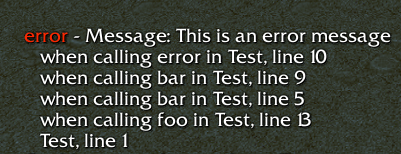- Joined
- Jan 1, 2009
- Messages
- 1,617

In the last couple of months, we have reached over 100 stars on GitHub, updated our homepage, and as usual caught up with support for Warcraft 3 patches
1.30.2 and beyond.Tool updates
- The wurst family of tools now supports the latest battle.net stable patch (1.30.2).
- The wurst language was updated to allow
classes to contain tuple array members.
- Improper usage of generic types now throws proper compilation errors
- Attempting to access objects that are known to have already been destroyed now fails at compile time
- Fixed a bug in local optimizations which caused unexpected behavior.
- Wurst no longer requires JavaFX, which enables wurst builds in a wider range of java distributions.
Standard library highlights
- Merged over a dozen awesome pull requests.
- Added
DummyCasterin addition toInstantDummyCasterfor channel based spells, and spells with delayed effects.
- Fixed some critical bugs in
HashList,HashSetandKnockback3D.
- We have newly-added code conventions - go align your formatting!
- We have begun writing in-depth package documentation
>> Read more <<
Attachments
Last edited:



